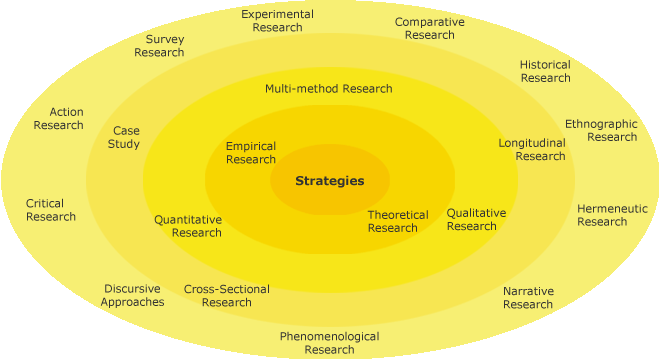Strategies

A research strategy is the overall plan, which a researcher uses to conduct a research project. A research strategy includes those methods of research with particular rules and aspects, which apply to a particular research project.
A research strategy is a roadmap informing the researcher about the essential methodological choices, which apply to conducting a research project. A research strategy helps the researcher to select and use research methods at both theoretical and practical levels. The concept of a research strategy is broad. The methodological literature defines research strategy in many various ways. We a research strategy as the rules directing a research project. The focus of a research strategy can be either broad or narrow depending on the rules directing the research methods.
The interactive graphic above shows the methodological choices available to you when planning a research project. The circles show whether the focus of a method is broad or narrow. The further is the distance of a particular method from the centre the narrower is the focus or the closer is the distance of a particular method to the centre the broader is the focus.
An example:
Qualitative research is in the inner circle, close to the centre. The focus of qualitative research is broad. Narrative research is in the outer circle, far from the centre. The focus of narrative research is narrow. The strategies showing in the circles act as links to more detailed explanations.
